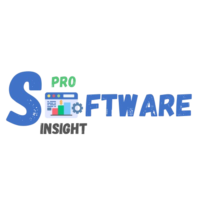Performance Management Software for Small Companies

Table of Contents:
Intro
- What Is Performance Management Software?
- How Performance Management Software Benefits Small Businesses
- Key Features
- Challenges of Using Performance Management Software
- Conclusion
Managing employee performance is one of the most critical aspects of running a small business. Yet, it often becomes a complex and time-consuming task for owners and managers juggling multiple responsibilities. Performance management software is a game-changer in this scenario, offering structured, efficient, and scalable solutions to monitor, assess, and enhance employee productivity.
In this post, we delve into what performance management software is, why it matters for small businesses, and how to navigate the challenges of implementation. We’ll also answer common questions to ensure you have a comprehensive understanding of the topic.
What Is Performance Management Software?
Performance management software is a digital tool designed to streamline the process of evaluating employee performance, setting goals, providing feedback, and fostering professional growth. Unlike traditional methods such as spreadsheets or manual tracking, this software centralizes and automates performance-related tasks, making it easier to align individual goals with organizational objectives.
Key Features of Performance Management Software
- Goal Setting and Tracking: Allows managers and employees to set SMART goals and monitor progress.
- Performance Reviews: Facilitates structured review processes, including 360-degree feedback.
- Real-Time Feedback: Encourages continuous feedback rather than annual reviews.
- Analytics and Reporting: Provides insights into performance trends and areas for improvement.
- Integration: Syncs with other tools like HR software or payroll systems for seamless operations.
How Performance Management Software Benefits Small Businesses
1. Streamlines Processes
Manual performance management processes can be time-intensive and prone to errors. Software automates key tasks like review reminders, goal tracking, and report generation, freeing up time for more strategic activities.
2. Enhances Employee Engagement
Regular feedback, clear goal-setting, and transparency empower employees to take ownership of their development, leading to higher engagement and job satisfaction.
3. Improves Decision-Making
Data-driven insights from the software enable managers to make informed decisions about promotions, training, and resource allocation.
4. Supports Scalability
As your company grows, performance management software scales effortlessly to accommodate additional employees without overburdening your team.
5. Boosts Compliance and Documentation
With all performance records centralized, maintaining compliance with labor laws and handling disputes becomes more straightforward.
Challenges of Using Performance Management Software
- Cost Concerns: Many small companies operate on tight budgets. While there are affordable options, high-end solutions can strain finances.
- Learning Curve: Introducing new software requires training, which can temporarily disrupt workflows.
- Customization Limitations: Some tools may not fully cater to the unique needs of a small business, necessitating additional customization.
- Employee Resistance: Employees accustomed to informal processes may initially resist structured performance evaluations.
FAQs
Do small businesses really need performance management software?
Absolutely. Even small teams benefit from the structure, transparency, and efficiency that performance management software provides. It’s particularly useful for fostering employee growth and ensuring alignment with business goals.
How much does performance management software cost?
Costs vary widely, from free basic versions to premium packages costing hundreds of dollars monthly. Many vendors offer tiered pricing to accommodate different budgets.
Can it integrate with other tools?
Most performance management software integrates seamlessly with HR systems, payroll software, and communication tools, making it easy to incorporate into your existing workflow.
How do I choose the right software for my small business?
Start by assessing your business needs, budget, and team size. Look for features like ease of use, scalability, and robust support options. Reading user reviews and requesting demos can also help.
Conclusion
Performance management software is no longer a luxury – it’s a necessity for small businesses striving to stay competitive. By streamlining processes, enhancing employee engagement, and providing actionable insights, these tools empower small companies to maximize their potential. While challenges like cost and adoption may arise, the long-term benefits far outweigh the initial investment.
Take the time to evaluate your specific needs and choose a solution that aligns with your goals. With the right software, you can create a workplace culture of continuous improvement and success.
